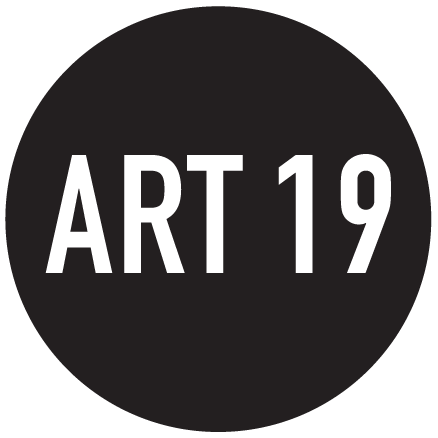Christie's: Monet and Richter: Blurring the Lines
An innovative selling exhibition explores the dialogue between a group of selected paintings by Claude Monet and Gerhard Richter
Working a century apart, Claude Monet and Gerhard Richter both redefined painting for their respective eras. The great French Impressionist, rejected by the conservative Académie des Beaux-Arts in the 1860s, sought to express his perceptions before nature as truly and immediately as possible. Thinking in terms of light, colour and shape rather than figurative form, he said, ‘I like to paint as a bird sings.’
Claude Monet (1840-1926), Un Chêne au Bas-Bréau, Le Bodmer, circa 1865. Oil on canvas. 21⅜ by 16⅛ in (54.4 by 41 cm). Offered for private sale at Christie’s
He freed himself from convention, and, in his monumental late works, paved the way for the Abstract Expressionists’ vision of painting as surface, creating luminous arenas of shimmering light and colour.
Richter, working since the 1960s, has pursued arguably the most profound enquiry into the nature and purpose of painting in the post-war era. Working in dialogue with genres as diverse as Pop art, photography, and landscape painting, his frequent cynicism is balanced by an enduring belief in art as a force for hope.
Gerhard Richter, Bäume im Feld (Trees in Field), 1988. Oil on canvas. 32½ x 44 in (82 x 112 cm). Offered for private sale at Christie’s
Taking up Monet’s mantle, he has posed a fundamental challenge to the distinction between abstraction and representation. Today, he is recognised as one of the greatest artists of his generation: a conceptualist and colourist in equal measure, who breathed new life into painting at a critical moment in its history.
From his earliest days as an artist, Monet worked en plein air, seeking to capture the sensation and impression of standing within nature itself. This desire led him to invent a new form of landscape painting: from the bustling boulevards of modern Paris or the billowing steam of a train station, to his blossoming garden at Giverny, he painted the world as he experienced it, capturing fugitive effects of light and colour rather than attempting to create any kind of idealised fiction of reality.
Claude Monet (1840-1926), Leicester Square, la nuit, 1900–1901. Oil on canvas. 31½ x 25¼ in (80 x 64 cm). Offered for private sale at Christie’s
Richter, meanwhile, has never been an en plein air painter, or even a painter from life. His is a studio practice, born of the study of images rather than of things. His own landscape paintings, while captivatingly beautiful, are based on the painstaking replication of photographs.
‘The subject is secondary. What I want to reproduce is that which is between the subject and me’ — Claude Monet
They invite the viewer’s gaze, then deflect it, unyielding: they enact what Richter sees as the ultimate loss of painting’s status as a mirror of the world.
Gerhard Richter, Abstraktes Bild, 2004. Oil on canvas. 50½ x 34¼ in (128.3 x 87 cm). Offered for private sale at Christie’s
Like Monet’s works, they are often softly blurred. Yet where Monet aimed to catch the hazy, shifting effects of actual vision, Richter uses the blur to enact the conceptual impossibility of seeing with unclouded eyes.
However divergent their philosophies, the visual echoes between Richter and Monet — from their vast, colour-bathed canvases to jewel-like pictures of pastoral scenes — make for a compelling painterly dialogue. Both artists achieved a wide variety of surface effects in their paintings, ranging from planes of lavish, heavily encrusted pigment to glowing, vaporous zones of weightless light.
Claude Monet (1840-1926), Les Bords de la Seine près de Vétheuil. Oil on canvas. 23 x 31 in (58.4 x 78.7 cm). Offered for private sale at Christie’s
Both worked in series, redefining their focus and varying on a theme — from Monet’s Nymphéas to his Rouen Cathedral, Gare Saint-Lazare and Haystacks works, and from Richter’s Grey paintings to his Abstrakte Bilder, Colour Charts and Candles.
‘Painting is the making of an analogy for something non-visual and incomprehensible: giving it form and bringing it within reach. And that is why good paintings are incomprehensible’ — Gerhard Richter
Both, in perhaps the most compelling parallel, reached crescendos of ambition and achievement in their later careers: Monet with his Grandes décorations — the final, symphonic ensemble of 22 mural-sized Nymphéas now held at the Musée de l’Orangerie — and Richter with his vast, musical abstract cycles of the 1990s and early 2000s such as Bach and Cage, and his magnificent 2007 Cathedral Window for the south transept of Cologne Cathedral.
Gerhard Richter (b. 1932), Zwei Bäume (Two Trees). Oil on canvas. 24⅜ x 24⅜ in (62 x 62 cm). Offered for private sale at Christie’s
Richter and Monet — a painter dancing between doubt and belief, and a painter of the external world seen anew — are united in their grandeur.
‘The classical is what holds me together,’ Richter has said. ‘It is that which gives me form. It is the order that I do not have to attack. It is something that tames my chaos or holds it together so that I can continue to exist. That was never a question for me. That is essential for life.’
Browse Monet ǀ Richter online until 20 December






